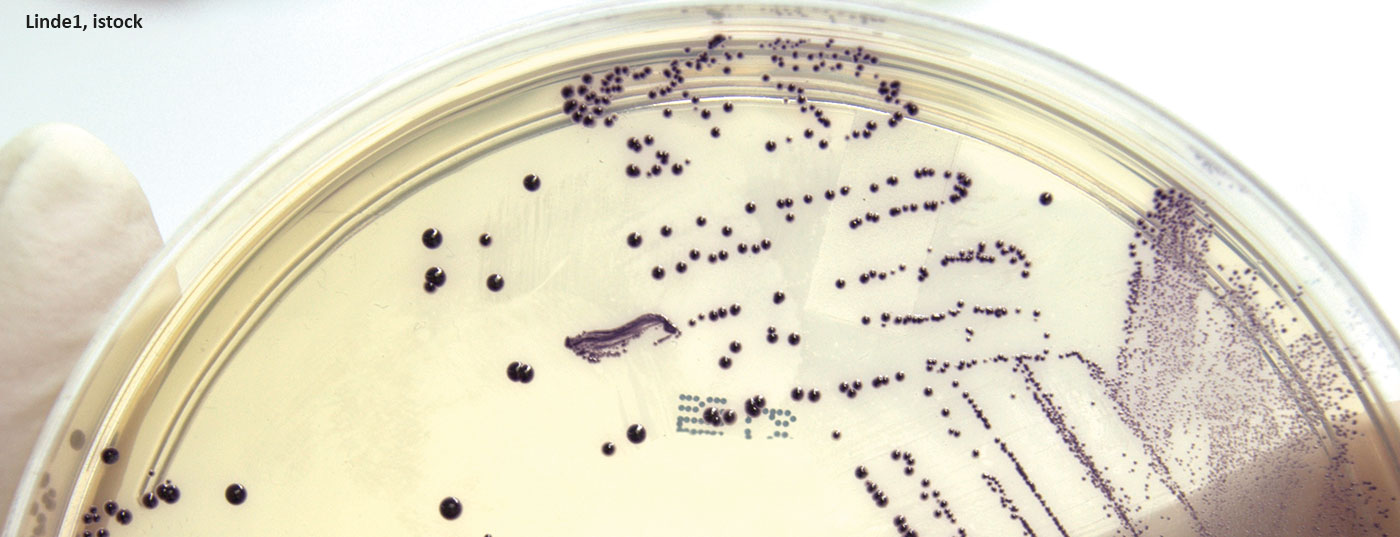The use of silver-containing dressings is recommended for critically colonized or infected wounds for a period of 14 days with subsequent evaluation.
Silver ions attack bacteria and other microorganisms in various ways and inhibit their growth. For a bactericidal effect to be achieved, the elemental silver must be converted into its ionic, effective form. Because silver ions have multiple antimicrobial sites of action on target cells, the risk of developing bacterial resistance is low, unlike antibiotics [1,2]. Silver ions are present in inorganic silver compounds and in organic complexes, which are released from the compound upon contact with wound secretions and are effective against both Gram-positive and Gram-negative bacteria – including resistant bacteria such as MRSA and vancomycin-resistant enterococci [3,4]. In combination with activated charcoal, wound odors and toxins are additionally bound.
A meta-analysis with clinical data from 2000-2015 summarizes the evidence base for silver in wound care [1]. In 28 of the 39 controlled studies, positive effects of silver-containing wound materials were shown, in particular a reduction of the microbial load and an acceleration of wound healing. Thematically, 9 studies were on burns, 9 on venous leg ulcers, 3 on pressure ulcers, 2 on chronic wounds, 1 on diabetic foot syndrome, and 5 on other wounds. The remaining included studies focused on quality of life, cost-effectiveness, and reduction of bacterial bacterial load. The conclusion of the expert group is that with targeted and time-limited use, in addition to the antimicrobial effects, an improvement in the quality of life as well as good cost-effectiveness could be achieved by using silver-containing wound dressings.
Literature:
- Dissemond J, et al: Evidence of silver in wound care – MetaAnalysis of clinical trials from 2000-2015. JDDG 2017; 15: 524-536.
- Kramer A, et al: Consensus on wound antisepsis: update 2018. Skin Pharmacol Physiol 2018; 31: 28-58.
- Percival SL, Bowler P, Russell D: Bacterial resistance to silver in wound care. J Hosp Inf 2005; 60: 1-7.
- Parsons D, et al: Silver antimicrobial dressings in wound management: a comparison of antibacterial, physical, and chemical characteristics. Wounds 2005; 17(8): 222-232.
DERMATOLOGY PRACTICE 2022, 32(2): 42











